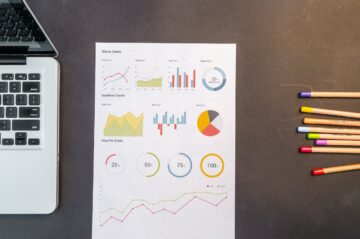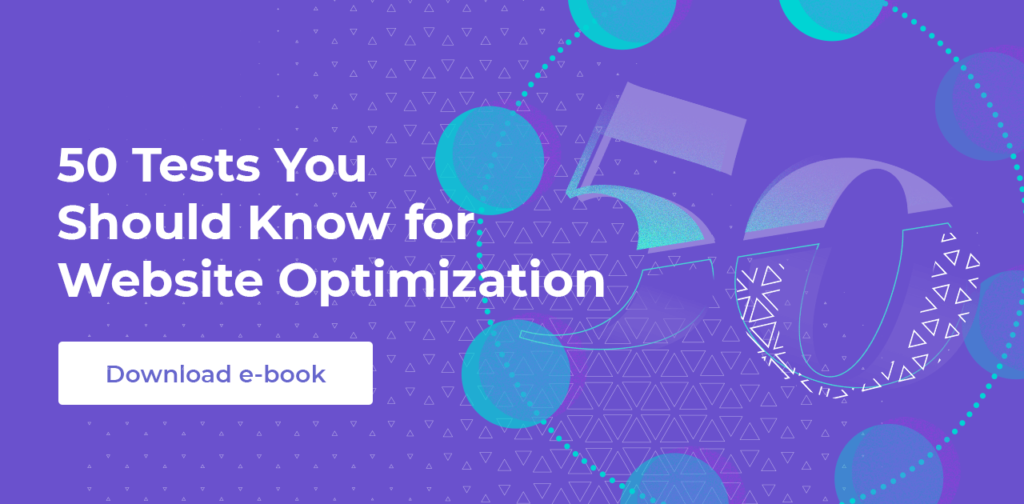Customization and personalization describe two very different, but not entirely unrelated, practices. Customization can come in many forms, from fast food restaurants that encourage customers to design their foodstuff their way, to online stores that allow visitors to design their own clothing. Personalization, on the other hand, is a far more complex practice that takes into account customer (or potential customer) behavior in order to market the right products, to the right person, at the right time. Using big data and powerful algorithms, personalization is in its infancy and is becoming a more powerful tool every day, with a diverse number of businesses implementing it to great success. Getting the most out of both practices requires an understanding of how they both work, and the major differences between them.
The Differences Between Customization And Personalization
Customization and personalization are often thought to be synonyms, but while some crossover certainly exists, they are very different terms referring to very different practices. Where both converge is in their ability to make the customer feel as if they have a unique, bespoke, relationship with the brand in a way that the mass marketing of the past could never achieve. Both practices have proven particularly well suited to Millennials, the largest consumer age group, who have an instinctive mistrust of older forms of advertisement but are more influenced by both customization and personalization based marketing. So what exactly are the differences and how are do they work?
Customization Definition
The most common form of customization comes in the form of product customization and is typically found online. Product customization is particularly popular for clothing outlets, whereby shoppers can design a piece of clothing from an online template, using different colors, fabrics, and shapes to make their own ‘unique’ product. Nike is one of the most important innovators in the field, with products that particularly attract Millennials.

Another brand that has used product customization to great effect is Burberry, who has gone from strength to strength in recent years, partly due to being innovators in the field of product customization.

This is sometimes referred to as ‘mass customization’ whereby online tools allow the customization process to produce bespoke products at mass-produced prices. Mass customization may not be possible for smaller businesses at this point in time, but with the advent of 3D printing, this might be about to change.
Mass customization is all about customer experience, sometimes referred to as CX, which marks an enormous shift from shopping habits that were once almost entirely about the product. Interacting with brands and producing individual styles, or at least appearing to, is at least as important to Millennials as the functionality of a product, and there is little reason to think that subsequent generations will not have similar expectations in the future, especially with technology becoming so ubiquitous and powerful. Wherever retail goes in the near future, CX is going to be an essential part of it.
Mass customization should not be thought of as a purely Millennial practice, however, with other generations also highly Internet savvy, online shopping has become popular with the majority of shoppers. While the cutting edge of customization is not a major preserve of older generations, the need to keep such platforms simple and easy to use should not be ignored.
One of the issues facing businesses offering product customization is how quickly can each purchase be produced? Convenience is also thought to be a major concern for shoppers in the 21st century, and patience is not seen as a virtue. This goes to the heart of the customer experience and will likely inform how successful the model is for each business. The more complex mass customization becomes, the larger on-demand mass production will be.
One thing is for sure, what was once the preserve of the burger joint or ice cream parlor, customization is fast spreading to all aspects of retail, and as a result, is changing everything.
Personalization Definition
Personalization is one of the most misunderstood marketing terms of all. Often misunderstood for customization, recommendation and even optimization, it is instead a set of well-defined practices with an overall purpose or goal. Unlike customization, which offers a very specific set of tools for customer interaction, personalization has far-reaching methods and possibilities and is currently at the very beginnings of its potential. It also touches upon issues of privacy, politics and generational divides.
In 1993, The One to One Future by Don Peppers and Martha Rodgers set out to describe how personalization might work. Although they didn’t have the data to consider the full consequences of the Internet at that time, it did present a compelling argument for what might happen if advertisement could be cultivated for the individual instead of the mass marketing model of its time. This book, in hindsight, is seen to be a seminal moment for personalization.
In the broadest sense, personalization is just that – marketing designed with the individual in mind. Obviously, there is no single human observing individual tastes to present products or services that are most relevant. This is where highly sophisticated algorithms come in.
In the broadest sense, personalization is just that – marketing designed with the individual in mind.
A type of personalization is the recommendation engine, although it should be noted that personalization is not a type of recommendation. The most common of these are websites and streaming services, such aYouTubebe or Netflix. If you have ever used these sites you will know that certain boxsets or videos are recommended based on previous viewing habits. To begin with, these were obviously connected programs. For example, if you had watched a Basketball documentary, there is a good chance that one on Baseball would be of interest to you. So far so simple. But as recommendation engines became more sophisticated, seemingly unconnected content began to work just as well. The same type of algorithms are used in retail, most famously by Amazon, and include Email campaigns that are tailored to the individual and addressed personally. This is the beginning of personalization.
Personalization also uses segmentation, for example, individual traits, such as age, gender or location, all of which can profoundly change how marketing information is presented. Beyond that, a person’s politics, browsing behavior and even ethical concerns can be taken into account.
We should pause here to consider the two main versions of personalization, rule based and machine learning. Rule based personalization relies on the previously mentioned segmentation model, whereby the audience are broken down in to both broad and granular segments, such as age or location. Machine learning personalization, on the other hand, uses algorithms. These can be those used in recommendation engines and even parts of the segmentation marketing, such as behavior. Whereas basic algorithms can provide broad data, such as what is trending, recommendation engines and the like provide more in-depth information for the individual.
The advantages of personalization, particularly website personalization, are well documented. In May 2017, The Boson Consulting Group researched the return of investment of those that use personalization to those that do not. The results were staggering. With an overall revenue shift of more than $800bn, an increase of between 6%-10% compared to those who have not implemented it (2 to 3 times faster growth), the importance of personalization has become increasingly clear.

Web Personalization And Privacy Concerns
Privacy is a major concern for many consumers and personalization has sometimes seemed more like an unwelcome stalker to some as a result. With legislation being debated in various corners of the world, what is deemed as overstepping the mark should be a concern for all.
The good news for personalization advocates is that there is a definite generational divide, with the largest and youngest segment, Millennials, appearing much less concerned than Baby Boomers. The advantages of having a focused marketing individualized is largely welcomed by many Millennials, who hold user experience in higher regard than previous generations.

Having said that, all generations had some concerns regarding personalization and privacy, not helped by various data leaks and hacks of major companies. The truth of the matter, however, is that personalization need not be “Creepy”. Transparency is a great way to engender trust with customers. Personalization need not be a back-door practice, where using personal data is hidden behind jargon and misleading declarations. Most website visitors are happy to share data as long as they know how it’s being used, especially if there is some advantage in it for them.
Being able to opt out is another great way to make customers feel as if they have some control over the process. In some cases, the personalization process itself can be customized. While most users won’t bother engaging, they will appreciate the option to.
Evolution From Mass Marketing To One-To-One Marketing
Mass marketing is where a product or service is marketed to an entire population. It essentially treats everyone the same, with the same needs. Although that is clearly not the case, the philosophy revolves around the idea that the more people who receive the message, the more likely you will reach someone who is interested. It is essentially the practice of selling low cost and homogenous items at high volumes. While it is more miss than hit, mass marketing was well suited to mass media markets, such as television, which had the majority of the population engaging with it on a regular basis.
Mass marketing began in the 1920’s, with the advent of radio. The popularity of this form of media made it ripe for advertisers to market products in a way that wasn’t possible before. As attitudes shifted over the decades, mass marketing’s influence rose and fell until the 1980’s and 1990’s, when it reached its peak.
History of mass marketing timeline:
- 1920’s – Begins with the advent of radio
- 1930’s – The great depression reduces its influence
- 1940’s and 1950’s – With income rising, its effectiveness becomes relevant again through the “Mad men” era
- 1960’s and 1970’s – A rise in anti-Capitalism sees its influence wane again
- 1980’s and 1990’s – The peak years of mass marketing during the economic boom
The history of one-to-one marketing is essentially a history of the Internet. When the first HTML dialogue occurred on Christmas Day, 1990, it set in motion the beginnings of personalization. By 1993, the aforementioned book, One to One Future was released, predicting, with surprising accuracy, the future of personalization. Also in 1993, Webtrends was founded, which was essentially the first commercial web analytics program. Unfortunately, only those well-versed with the technology had any idea of how to read the data, so its effects were minimal.
Things carried on at pace, however, and log file analysis made it possible for non-tech people, most importantly marketers, to make use of the data. This was soon followed by hit counters and Javascript tagging, which became important as the Internet began to use more imagery. With few people using the Internet, however, the advances made during this time were not to be truly helpful for a few years to come.
It wasn’t until 2004 that the type on web analytics we know today began to appear and by 2005 Google had released Google Analytics. This allowed website owners to dig further into the data than had been previously possible, with concise visuals that allowed for easy reading of in-depth information. It is at this point that personalization becomes more tangible, with conversion rate optimization becoming a particular focus.
Machine learning personalization, such as recommendation engines, soon began to be useful in a way that was not possible before, as algorithms began to exponentiate their capabilities, with Amazon and Netflix leading the way. From Email campaigns to accurate predictions of preferences, the practices of personalization became ubiquitous by 2008.
Mouse tracking and eye tracking also added profound data that improves visitor experience and thus increases interaction. With a deeper understanding of customer habits, personalization is beginning to become more accurate, focused and effective.
With the advent of multiple devices using the Internet, Google released Universal Tracker in 2012. With more profound data at its fingertips, demographics, behavior and lifestyle began to be segmented more accurately, further categorizing customers for more predictable results. App personalization becomes more and more important as phone use begins to outstrip laptop/desktops for online use. Machine learning on mobile soon improves.
Soon after, personalization magnifies the effectiveness of CRM (Customer Relation Management), which focuses on user experience and customer retention. This only becomes possible as big data is collected at ever higher rates, allowing companies to truly understand their customer’s needs.
With the use of A/B testing, the future of personalization is now highly managed from beginning to end. No longer is trial and error at the forefront of designers of websites or marketing campaigns. Behavior on site is monitored to a level thought unimaginable just a few years ago and personalization is becoming truly individualized. User experience is now at the heart of personalization, and with the likelihood of more powerful algorithms and customer understanding to come, personalization seems to be very much in its infancy.
- 1990 – The birth of the Internet
- Early 1990’s – Web developers begin tracking HTML
- 1993 – Webtrends is founded, the first commercial web analytics program. Also, the release of the book One to One Future, which predicts personalization
- Mid 1990’s – Log file analysis enables marketers to use clear data for the first time and hit counters produce instant statistics for analysis. Javascript tags soon follow.
- 2005 – Google Analytics is released. Effective personalization begins to appear possible
- Late 2000’s – Machine learning improves, led by Amazon, You Tube and Netflix
- 2012 – Tracking for several devices becomes possible and segmentation improves
- 2013 – CRM becomes a major part of personalization due to improvements in behavior tracking
- 2017 – A/B testing becomes an integral part of personalization, allowing accuracy in website design and ad campaigns
How Can You Start A Personalization Strategy?
Website personalization need not be a complicated undertaking. In fact, it is becoming easier, and therefore more widespread, every day. With several tools at a business’s disposal, there are many ways to go about creating personalization that works for each business. In other words, personalization should be personal for each business using it.
The first place to begin is getting to know an audience. Too many start with the concept that the product is key and then try to persuade an audience that they are right. This is akin to a waiter insisting that the customer has made the wrong order when they chose the duck and bringing them beef instead. As should be clear now, customer experience has become one of the most important aspects of personalization, and that cannot be achieved without getting to know exactly what it is your customer expects from the interaction with your website.
This is where segmentation comes in. There are four main segments to consider; Demographics, Geographic Behavior and Psychographic. The easiest place to start is demographics. What is the age of your audience and customer base? Is it skewered towards one gender or another? For some products and services these might be self-explanatory, but if you are underperforming with one group, why is that? Location is another key segment to understand and can encompass nationality, climate, culture and whether or not where the person resides is coastal or land locked.
To truly understand a customer, however, behavior is essential. It is in this category that personalization can truly come into its own. Behavior can be tracked by multiple analytic tools. Bounce rate (statistics showing those that leave a website immediately) can provide a broad idea of which pages are not performing. For example, seeing which pages lead to the most conversions (for whichever behavior being tracked). Customer mapping is a great tool for this, tracking where a visitor goes, how long they spend on specific pages, and which lead to the best outcomes.
Heat mapping provides data on which parts of the individual page is performing best, allowing you to mimic the successful parts while editing those that appear to be failing. Google Analytics is likely going to provide the most relevant information, especially at the beginning of the personalization process, and much of the data already mentioned is available through it.
Once you have a handle on your audience and their experience with your website, the next step is planning their experience. Offering compelling content, and relevant products and services, is key here. With an understanding of who your customers are and what it is they want and need, this becomes a much easier task than would otherwise be possible. An effective measure would be to highlight the parts of the website that can be best designed for personalization. A good rule of thumb is often choosing one or two areas per page that can engage an audience this way. This should not be done haphazardly, however, so make sure the personalization aspects of the website are with a specific purpose, based on your audience knowledge, in mind.
It is important to remember to not pigeonhole the audience. It is one thing to offer a personalized experience, but this should not restrict the visitor to a narrow, one dimensional figure. Personalization should provide gentle nudges, with triggered messages, designed with the satisfaction of the customer and focused content at the heart of it all. For this, always remember the three aspects of personalization that make it effective; the right message, to the right person, at the right time.
Personalization should provide gentle nudges, with triggered messages, designed with the satisfaction of the customer and focused content at the heart of it all.
No matter how well-planned personalization is, it will also require constant tracking. People’s behaviors and wants can be tracked, but they are not always predictable. At the beginning of personalization, improvements are likely to be needed as the process is cultivated to everyone’s needs. This may require a little patience but will likely reap rewards eventually. What’s more, personalization is in its infancy, which means practices will be improving in real time. Along with the fact that habits, behaviors, fashions and expectations can change in a relatively short space of time, monitoring is essential for success.






